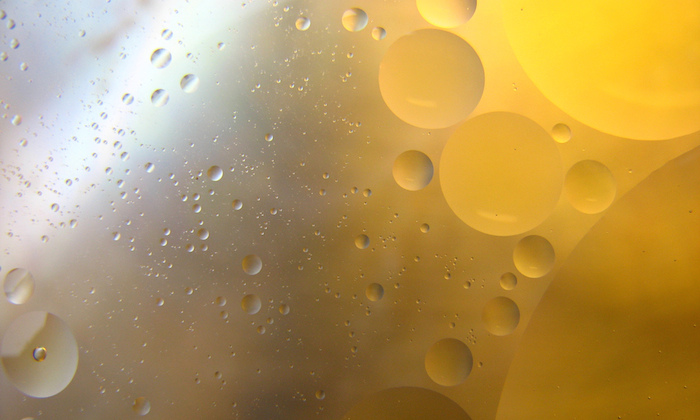Just days after new dietary guidelines came out telling Americans to pay more attention to the types of fats, not the amounts, that they eat, scientists announced they've found a new, better and faster way to detect distinctions in the fats found in food.

Researchers at The University of Texas at Austin have developed an improved method for measuring glycerides, a finding with applications for studying how our bodies break down and store fat in ways that might contribute to diabetes and obesity. The finding also could help with detecting counterfeit olive oils.
Glycerides, the main component of animal fats and vegetable oils, come in many subtly different versions, with a wide variety of health benefits or risks. Until now, analyzing the glycerides in fats required expensive and cumbersome tools called mass spectrometers. The new method, described this week in the journal Proceedings of the National Academy of Sciences, uses a more accurate, faster-acting approach, based on inexpensive technology. An array of dozens of tiny chemical sensors acts something like a nose or tongue, detecting the composition and abundances of different components of a substance.
"Our method was quite accurate," says Katharine Diehl, a former graduate student in the lab of chemistry professor Eric Anslyn. "These glycerides are very, very similar. So to be able to quantify one of those components out from all the rest is a powerful thing and really unique from a chemistry perspective."
Diehl says this is a tool that could be used in a wide range of research related to food and medicine, including to create fingerprints for authentic olive oils and to identify counterfeits. In 2011, freelance writer Tom Mueller published a book claiming that most imported extra-virgin olive oil is either adulterated with cheaper oils or flat-out fake. Testing olive oil purity has proven difficult and expensive with mass spectrometers, suggesting the need for a new and better approach. (In fact, a similar sensor array from Anslyn and his colleagues effectively creates wine fingerprints—revealing what kinds of grapes a wine used, where they were grown and how long they stayed on the vine. It's information that caught the eye of lawyers pursuing a wine fraud case in 2012.)
Researchers might also use the new method to compare the glyceride composition in a person's diet with the composition of his or her fat cells to enable medical advances. Because some metabolic disorders such as diabetes stem from a person's inability to properly break down and store fats, the new tool could help diagnose people with one of these disorders or who are at risk for one.
Anslyn and Diehl wrote the paper about the research, which was conducted in partnership with Sanofi, a pharmaceutical and health care company. Sanofi recently signed a partnership agreement with The University of Texas System to support early stage drug research.
The research was funded by the National Science Foundation and supported through the Welch Regents Chair for Dr. Anslyn.

















Comments